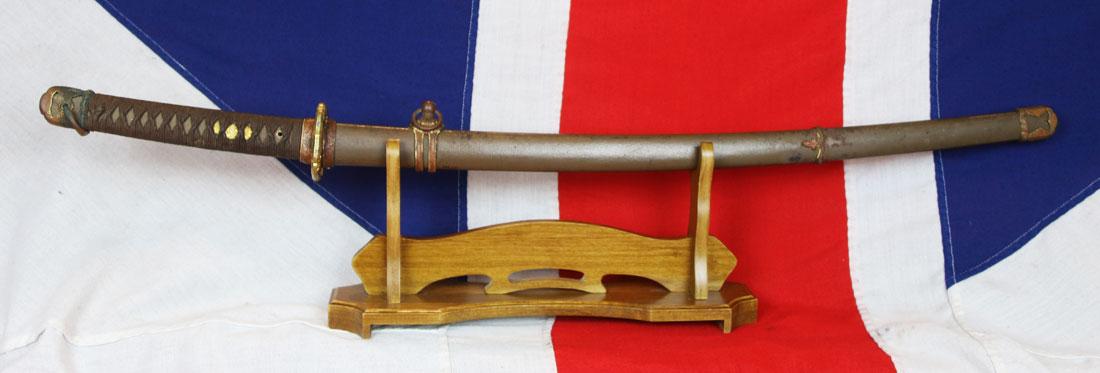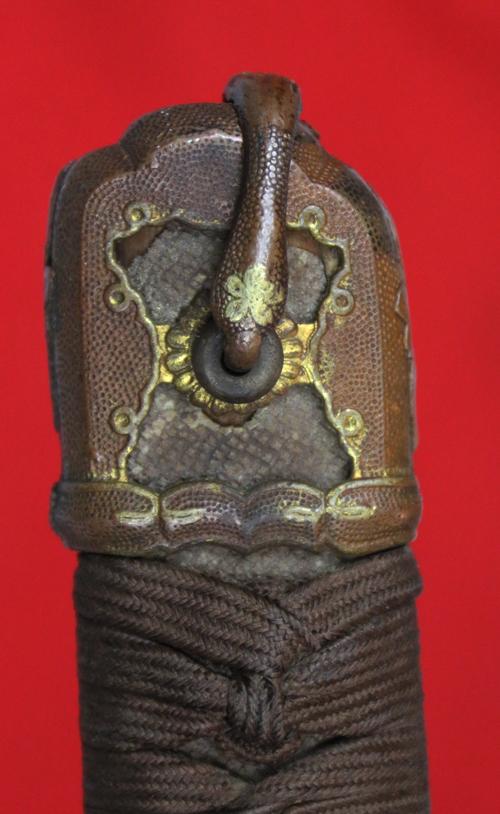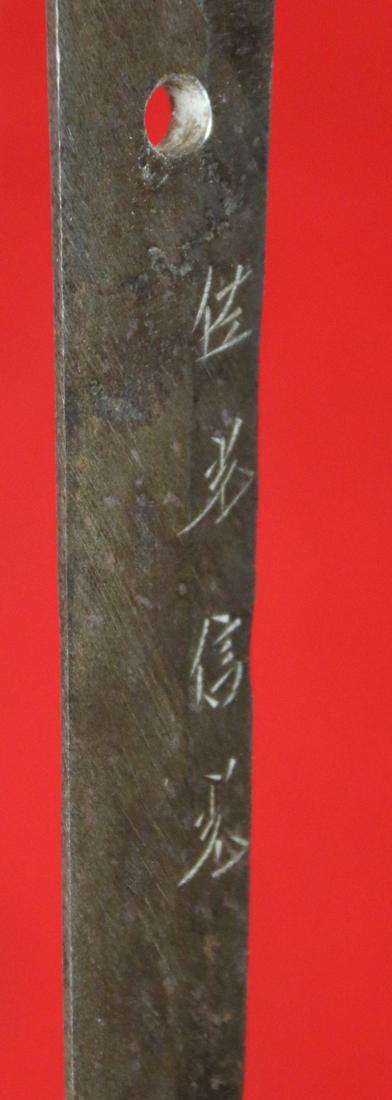Japanese WW2 Signed Shingunto Officer's Katana
A superb condition sword, signed blade [possibly Nobuhide], just returned from being professionally 'artisan' cleaned, [but importantly not restored]. So it now looks just as it was when it was captured in WW2 by a British officer in 1945. Just a little discolouration to one side of the kabutogane. You might never be able to find a better condition original regulation Shingunto Japanese officer's sword from WW2. Surrendered in Burma to an officer in the South Wales Borderers. We had his sergeant's Japanese surrendered sword last month. The 6th Battalion, South Wales Borders served in the Burma Campaign with the 72nd Infantry Brigade, 36th British Infantry Division, previously a division of the British Indian Army before being re-designated the 36th British Division. The division was initially in reserve for the Second Arakan campaign in early 1944, but was called on to relieve the besieged 7th Indian infantry Division after early setbacks. After the Japanese were defeated at the Battle of Ngakyedauk, 7th Division was withdrawn and 36th Division took over the offensive in the Kalapanzin River Valley. Units of the division captured the vital eastern railway tunnel linking the Kalapanzin valley with the port of Maungdaw.
The division withdrew for a brief rest at Shillong in Assam, and was then despatched to Ledo, where it came under command of the American-led Northern Combat Area Command.
Early in July 1944, the division started to fly into Myitkyina airfield in North Burma, with 72nd Brigade being the first formation to land. On 1 September 1944, shortly after the division had started advancing down the "Railway valley" from Mogaung towards Indaw on the right flank of NCAC, the division was renamed the British 36th Division. On 14 December, a third brigade was added to the division; confusingly, this was the first Indian formation that the division commanded (the 26th Indian Infantry Brigade, of one British and two Indian battalions).
The division was distinguished for being the only British division to rely entirely on air supply, mainly by the United States' Tenth Air Force, for an extended period. The United States Army Air Force also provided the division with 12 light aircraft equipped for casualty evacuation and a US Army engineer company to construct its airstrips. Initially, the division was without its own divisional artillery and instead relied on a Chinese artillery group under US command.
The division, having linked up with the main body of Lieutenant General William "Bill" Slim's British Fourteenth Army, crossed the Irrawaddy River and advanced independently down the eastern side of the river. Units from the division suffered losses forcing the crossing the 300 yard wide Shweli River, but the division continued to advance until the fall of Mandalay in March 1945.
Code: 23259
Price
on
Request










